Hiram Maxim, Engineer of Death
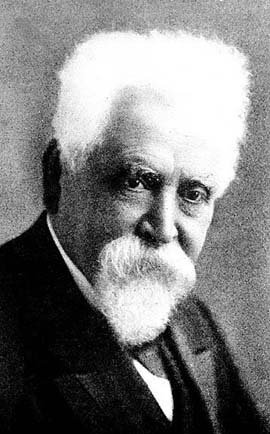 There is a myth about the tortured scientist, crying out in pain as he sees the inventions he created for peace used to wage war. There are stories of scientists who believed that the inventions they created had made war so terrible that it could never be waged. [1] But the simple truth is that most of those who made (and still make) weapons of war do so with their eyes wide open. They knew they were making tools with the pure intention of killing people. And so they competed to make that killing as efficient as possible, to outsell their competitors. The end result of this drive to perfect the art of killing can be seen no clearer than in the fields of northern France, during the First World War. Here the fruits of a century of industry blossomed into death on a scale never before seen in human history. No man contributed to this more than Sir Hiram Stevens Maxim. In 1882, by his own account, he was in Europe when another American he met there told him “Hang your chemistry and electricity! If you want to make a pile of money, invent something that will enable these Europeans to cut each others’ throats with greater facility.” And he certainly did that.
There is a myth about the tortured scientist, crying out in pain as he sees the inventions he created for peace used to wage war. There are stories of scientists who believed that the inventions they created had made war so terrible that it could never be waged. [1] But the simple truth is that most of those who made (and still make) weapons of war do so with their eyes wide open. They knew they were making tools with the pure intention of killing people. And so they competed to make that killing as efficient as possible, to outsell their competitors. The end result of this drive to perfect the art of killing can be seen no clearer than in the fields of northern France, during the First World War. Here the fruits of a century of industry blossomed into death on a scale never before seen in human history. No man contributed to this more than Sir Hiram Stevens Maxim. In 1882, by his own account, he was in Europe when another American he met there told him “Hang your chemistry and electricity! If you want to make a pile of money, invent something that will enable these Europeans to cut each others’ throats with greater facility.” And he certainly did that.
Hiram Maxim was born in Maine in 1840, in a little town called Sangerville. [2] He grew up with a typical American country childhood. One apparently meaningless incident that would later prove to be pivotal in his life took place when he was out hunting and fired a rifle too powerful for his child’s weight, resulting in him being knocked off his feet. At the age of 14 he was apprenticed to a local coach-maker, where he demonstrated his talents by inventing an automatic mousetrap that rid the local mill of mice. His uncle, Levi Stevens, clearly felt he could harness the young man’s ingenuity, and at 24 Hiram went to work as an engineer for him in Abington, Massachusetts. Here he was given the freedom to experiment that stimulated his inventive mind, and in 1866 he filed his first patent, for a device that it still in use today – the curling iron. Some speculate that his fiancee may have suggested the idea to him, as a year later in 1867 he was married to Jane Budden. Hiram would file 270 more over patents over the course of his life. One of the early ones was for an automated sprinkler system. He tried to gain investors to commercialise this in Boston, but failed. [3] Where he succeeded, however, was in attracting of the interest of Spencer D Schuyler.
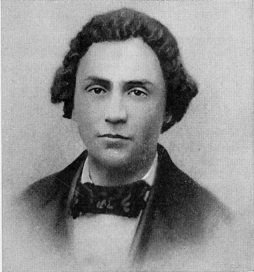
At the time the race was on to develop the first commercially viable electric lightbulb. Schuyler had formed the US Electric Lighting Company to try to do so, and he hired Hiram as his chief engineer. Hiram immediately formed a rivalry with the head electrician hired by Schuyler, who was probably the US inventor William Sawyer but who Hiram referred to in his diaries as “Mr D”. Maxim would later claim to have invented the principles of the incandescent lamp that Sawyer would patent. In the end, of course, the methodical approach of the Edison company resulted in them winning the “lightbulb wars” by a large margin, but by that time Hiram had moved on to better things.
In 1881, Hiram travelled to Europe to supervise the setting up of a European office. While there he visited the Paris Electrical Exhibition and travelled around Europe. It was during this tour that he received the advice to turn his hands to weapon making, and he took it to heart. He moved to Europe that year, leaving behind him his wife Jane and their children. Three years before he had concocted a bigamous marriage with a 15 year old girl named Helen Leighton, who bore him a daughter, though he was still legally married to Jane. Helen left him when she found out he was already married, but he simply moved on to Sarah Hayes, who accompanied him to London as his assistant/mistress. (They were married in 1888, though there is some question over whether he ever actually divorced Jane.) The two set up in West Norwood in South London, where Hiram began working on the invention that would make him famous. The Maxim machine gun.
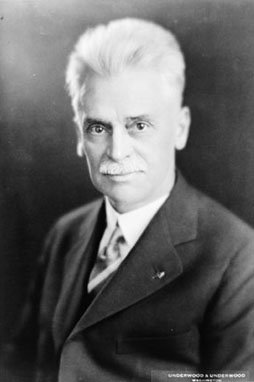
The inspiration for the Maxim machine gun was the childhood incident where firing a rifle had knocked the young Hiram off his feet. This was a result of Newton’s Third Law – “for every action there must be an equal and opposite reaction”. In this case the momentum applied to the bullet leaving the gun was balanced out by momentum applied to the gun itself, and through it to the young Hiram. He realised that this momentum could be harnessed to do work – specifically, by an arrangement of springs and ratchets, to eject the shell that had just been fired, load another into the barrel and trigger it off with the firing pin. Machine guns already existed, but they required the application of mechanical power – the famous Gatling gun, for example, required the turning of a stiff handle, limiting the rate of fire to what the operator could manage. In Maxim’s machine gun, you simply held down the trigger and the gun would fire until it ran out of bullets – which, if it was belt fed, could take a very long time. (The use of the recoil’s energy in this manner also reduced the overheating in the gun, meaning that it did not need the multiple barrels of the Gatling gun.) It was, in a word, the first truly automatic machine gun.
Hiram managed to complete his design in 1884, and demonstrated it to a group of invited guests. He formed a company with Albert Vickers, the son of a Yorkshire steel magnate, to build and market the weapon. At first, adoption was slow. Some British generals were opposed to the weapon as “unsporting”, while others could see no advantage over the existing Gatling guns. Early versions of Maxim’s gun were just as bulky as the Gatling, and even more unreliable. One of these early prototypes was presented to the explorer Sir Henry Stanley in 1886 for use in his expedition to rescue the governor of Equatoria and his staff from the approaching Mahdist forces. Though the expedition was not entirely successful (the governor, Emin Pasha, chose instead to stand and fight) the Maxim gun was decisive on several occasions in safeguarding Stanley’s retreat. The colonial forces became the main early customers for the guns. The Battle of Shangani, where 700 British soldiers supported by four Maxim guns were able to defeat an army of 3,000 Matabele – though the Matabele were armed with rifles and were a well-disciplined force, they suffered over 1,500 fatalities, while the British only lost four men. The British learnt the lessons of the battle well, and a standard tactic became to provoke the natives into charging the British line and then mowing them down with the guns. Inspired by the superiority of the Maxim, the writer Hilaire Belloc would famously have one of his characters declare:
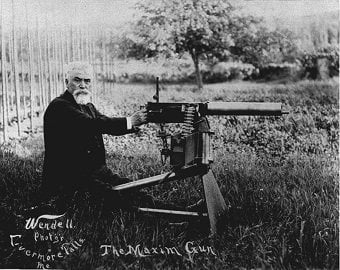
“Whatever happens, we have got
The Maxim gun, and they have not.”
The gun underwent several redesigns to improve reliability and cooling, while the development of smokeless gunpowder suitable for use in the gun by Hiram and his brother Hudson made the use of the guns against armies with artillery power much more feasible. (Previously machine guns had produced a distinctive plume of smoke that made shelling their positions easy.) The guns were adopted by both sides in the Russo-Japanese war, and the German observers embedded in both armies were impressed – so much so that the patent was licensed by the Germans, who set up a factory in Spandau to produce the guns en masse. So it was that when the German’s “Schlieffen Plan” failed and they were forced to retreat and retrench, their vast number of Maxim guns proved to be the ultimate lethal defensive weapon. Soon both sides had their machine guns drawn up facing each other, and while many other factors went into making World War I the notorious meat grinder it turned out to be, the fact that some sources estimate that 85% of the fatalities were due to machine gun fire speaks for itself.
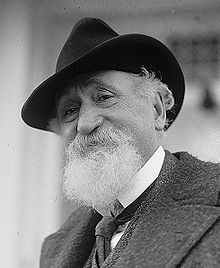
As mentioned, smokeless powder was invented by Hiram working with his younger brother Hudson, also an engineer and inventor. The exact details are lost in a haze of claim and counter-claim, but the most likely scenario seems to be that Hudson, who was thirteen years younger than Hiram, developed the powder based on a French smokeless powder variant. The patent was taken out in the name of “H. Maxim”, but Hiram then claimed sole credit based on the ambiguity of the initial. Hudson returned to America, where he managed to claim the patent there. He went on to several other related commercial ventures, and attempted to set up in England several times, but was foiled by Hiram using his influence to interfere with them. When he found out that Hiram had hired a private detective to dig up dirt on him, he decided that two could play at that game. He managed to track down Helen Leighton, the teenage girl Hiram had tricked into marrying him bigamously, and had her bring charges against him. Though Hiram was eventually acquitted, the scandal made him a laughing stock and led to an irreparable rift between the two brothers. [4]
Hiram went on producing new inventions throughout his life. He was fascinated with flight, and formed a company in 1890 (with backing from Albert Vickers and his brother) to produce a flying machine. In 1894, the machine made its maiden flight – 281 metres at the somewhat disappointing height of 1.4 metres off the ground. It was possibly the first time ever that a powered flying machine had actually gotten off the ground, but Hiram could not reduce the weight enough to make it viable. (As the plane had to be tethered for safety, it was not considered an “unassisted flight”, so the Wright brothers claimed that honour.)
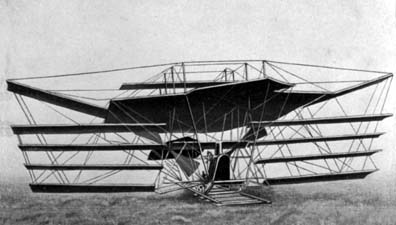
As he noted at the time, the issue was that the steam engines available were too heavy, and that a reliable petrol engine would be needed to provide the required power-to-weight ratio. This would later prove to be the case. Hiram himself never produced a viable flying machine, but he did invent “captive flying machines” – revolving amusement rides with airplanes attached that rose up due to centrifugal force, still in use today.
Hiram suffered from bronchitis for the last 16 years of his life, and this led him to his last significant invention – an inhaler he dubbed the “Pipe of Peace”. Lacking the spraying force of modern inhalers, instead his design had a long glass tube that allowed the vapours from a heated glass bulb to be inhaled directly to the back of the throat, an improvement over previous designs that allowed more efficient delivery of vapour.
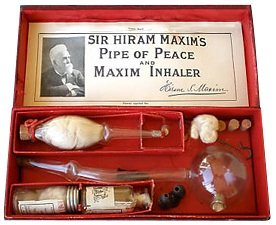
In this case he used menthol and evergreen mixed with water. By his own account this was the first time menthol had been used in that manner, which if true is a huge contribution to the field of decongestants. [5] The inhalers were very popular with those who used them and several hundred thousand were sold, though some of Hiram’s friends mocked him for peddling “quack nostrums”. In his 1915 autobiography, Hiram observed “it will be seen that it is a very creditable thing to invent a killing machine, and nothing less than a disgrace to invent an apparatus to prevent human suffering.” Perhaps the unfolding carnage of the First World War led to this uncharacteristic sentiment against his most famous invention. He died the following year. With the aid of his inhaler he had lived to the age of 76 – long enough to see the full impact that a more efficient murdering machine could have on the world. But, on the other hand, he definitely did make a pile of money.
[1] An argument could be made that the atomic bomb did actually do this, at least on the global scale.
[2] Another famous son of Sangerville was Sir Harry Oakes, who became the richest man in Canada after discovering gold in Ontario. He was murdered in the Bahamas in 1943, in a case that made headlines around the world even with the war on. After his son-in-law was exonerated of the murder, the real killer was never found.
[3] The first commercially successful sprinkler system was one patented by another Abington man named Philip W. Pratt four years later, possibly inspired by Hiram’s design.
[4] Hiram Percy Maxim naturally sided with his uncle in the feud. Though his father attempted a reconciliation, he never forgave him for leaving his family.
[5] Menthol oil was first isolated in 1861 and was primarily used for flavouring at first, so this is surprisingly plausible. On the other hand, Hiram has a habit of self-aggrandising in his autobiography, so he may be exaggerating.
